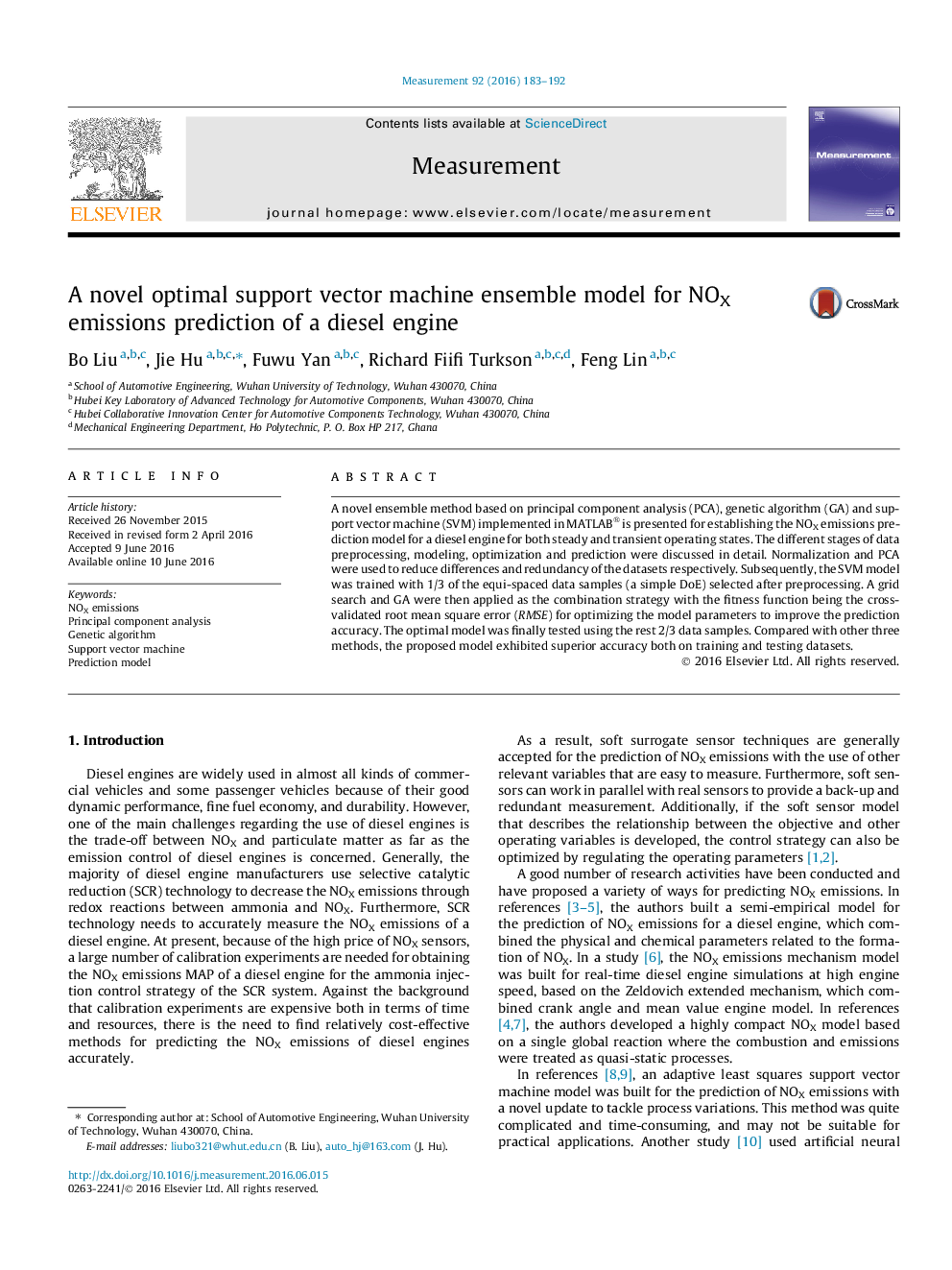| Article ID | Journal | Published Year | Pages | File Type |
|---|---|---|---|---|
| 7122998 | Measurement | 2016 | 10 Pages |
Abstract
A novel ensemble method based on principal component analysis (PCA), genetic algorithm (GA) and support vector machine (SVM) implemented in MATLAB® is presented for establishing the NOX emissions prediction model for a diesel engine for both steady and transient operating states. The different stages of data preprocessing, modeling, optimization and prediction were discussed in detail. Normalization and PCA were used to reduce differences and redundancy of the datasets respectively. Subsequently, the SVM model was trained with 1/3 of the equi-spaced data samples (a simple DoE) selected after preprocessing. A grid search and GA were then applied as the combination strategy with the fitness function being the cross-validated root mean square error (RMSE) for optimizing the model parameters to improve the prediction accuracy. The optimal model was finally tested using the rest 2/3 data samples. Compared with other three methods, the proposed model exhibited superior accuracy both on training and testing datasets.
Keywords
Related Topics
Physical Sciences and Engineering
Engineering
Control and Systems Engineering
Authors
Bo Liu, Jie Hu, Fuwu Yan, Richard Fiifi Turkson, Feng Lin,
